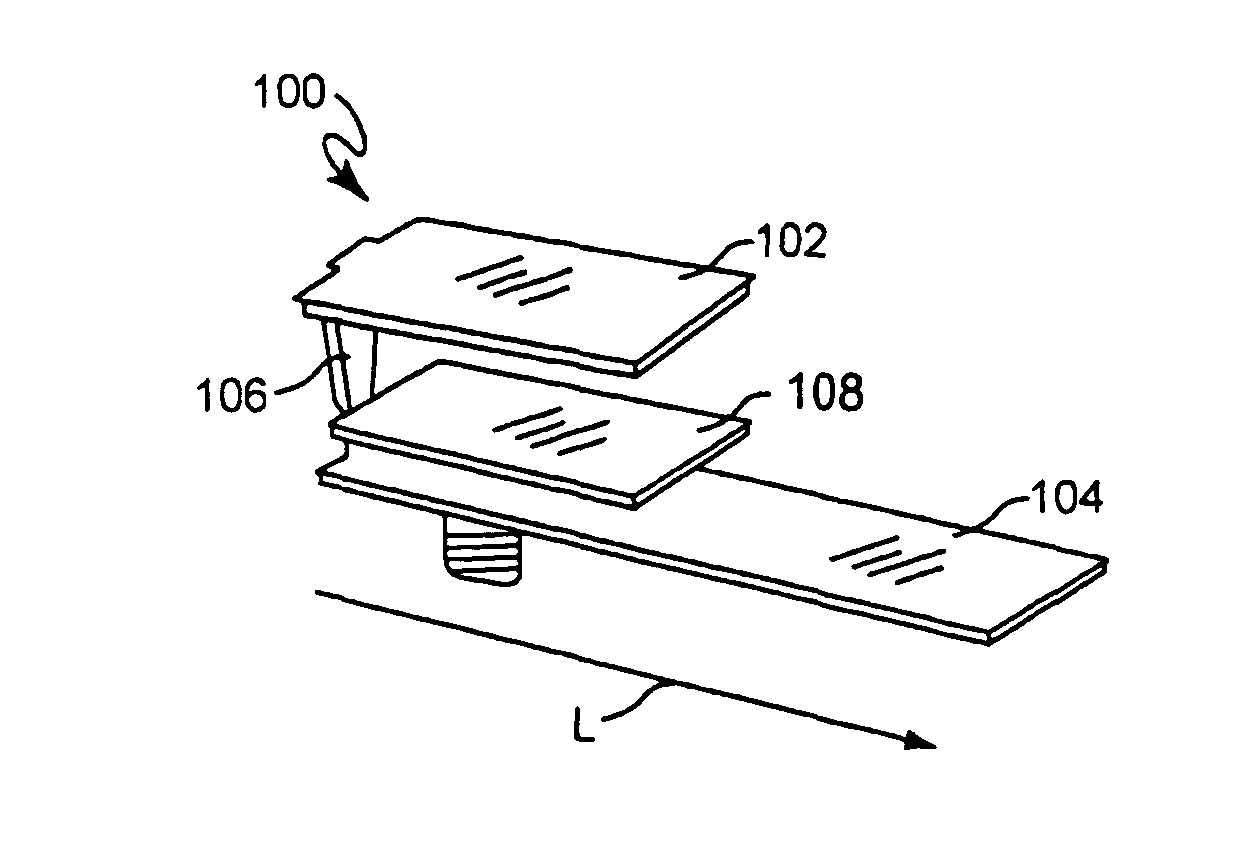Wideband compact planar inverted-F antenna
a compact, inverted-f antenna technology, applied in the structure of radiating elements, substantially flat resonant elements, resonance antennas, etc., can solve the problems of increasing the complexity of the handset, increasing the bandwidth parameter of most applications, and introducing difficulties into the feed system, so as to improve bandwidth and improve performance characteristics.
- Summary
- Abstract
- Description
- Claims
- Application Information
AI Technical Summary
Benefits of technology
Problems solved by technology
Method used
Image
Examples
Embodiment Construction
[0026]FIG. 1 illustrates a wireless handset, such as a cellular telephone or portable radio 10 to which an antenna 20 constructed in accordance with the principles of the present invention is attached. The antenna 20 is shown disposed along the top surface 11 of the handset 10, but may be attached at other suitable locations on the handset 10, such as either of the side surfaces 12, 13 or rear surface 14. A side mounting of the antenna 20 is shown in FIG. 1 in dashed line. Typically, the antenna 20 will be enclosed within a protective housing 16, or within the handset housing, but electrically isolated from the handset circuitry except for the connector.
[0027]FIG. 2 illustrates, in perspective one embodiment of a low profile antenna 20 constructed in accordance of the principles of the present invention. As shown best in FIGS. 2 and 3, the antenna 20 is of a “PIFA” style, that is a planar, inverted-F antenna. In this regard, the antenna 20 shown has a first conductive plate 22 and a...
PUM
 Login to View More
Login to View More Abstract
Description
Claims
Application Information
 Login to View More
Login to View More - Generate Ideas
- Intellectual Property
- Life Sciences
- Materials
- Tech Scout
- Unparalleled Data Quality
- Higher Quality Content
- 60% Fewer Hallucinations
Browse by: Latest US Patents, China's latest patents, Technical Efficacy Thesaurus, Application Domain, Technology Topic, Popular Technical Reports.
© 2025 PatSnap. All rights reserved.Legal|Privacy policy|Modern Slavery Act Transparency Statement|Sitemap|About US| Contact US: help@patsnap.com



